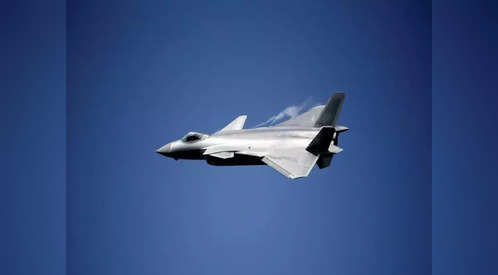Global Combat Air Programme Unveils Evolved Concept for Next Generation Fighter Jet
FARNBOROUGH, UK – A new era of aerial combat capabilities is on the horizon as the Global Combat Air Programme (GCAP) reveals an advanced concept model of its next generation fighter jet at the Farnborough International Airshow.
This tri-national collaboration between the UK, Italy, and Japan is set to revolutionize air warfare with cutting-edge technology and unprecedented international cooperation.
A Leap Forward in Design and Capability
The new concept model showcases a significant evolution from previous iterations, boasting an expanded wingspan to enhance aerodynamic performance. Engineers from BAE Systems (UK), Leonardo (Italy), and Mitsubishi Heavy Industries (Japan) have worked tirelessly under a collaborative agreement, leveraging digital tools like computer modeling and virtual reality to refine the design.
"The pace of the programme is extraordinary," said Guglielmo Maviglia, Chief Global Combat Air Programme Officer at Leonardo. "Each partner brings different, but complementary, qualities and requirements. We are now working closely together to exchange knowledge, address common challenges, and achieve common goals."
Technological Prowess for 2035 and Beyond
Set to enter service in 2035, this fighter jet is poised to be one of the most advanced in the world. It will feature an intelligent weapons system, a software-driven interactive cockpit, integrated sensors, and a next generation radar capable of processing 10,000 times more data than current systems. This technological leap aims to give it a decisive advantage in future aerial combat scenarios.
"The new model, unveiled at Farnborough International Airshow, shows notable progress in the design and concepting of this future fighter jet," stated Herman Claesen, Managing Director, Future Combat Air Systems at BAE Systems.
International Collaboration with Long-Term Benefits
GCAP represents a strategically important partnership that extends beyond military objectives. By fostering knowledge and technology transfer among the participating nations, it aims to cultivate sovereign combat air capabilities for each nation for generations to come. Additionally, the program is expected to create tens of thousands of jobs and promote economic growth across the UK, Italy, and Japan.
Hitoshi Shiraishi, Senior Fellow, GCAP at Mitsubishi Heavy Industries, highlighted the unique value of this collaboration, stating, "Since GCAP is a three-country joint development programme...we expect to obtain better results and deeper knowledge than ever before by combining the different cultures, experiences and knowledge of the three industries involved."


